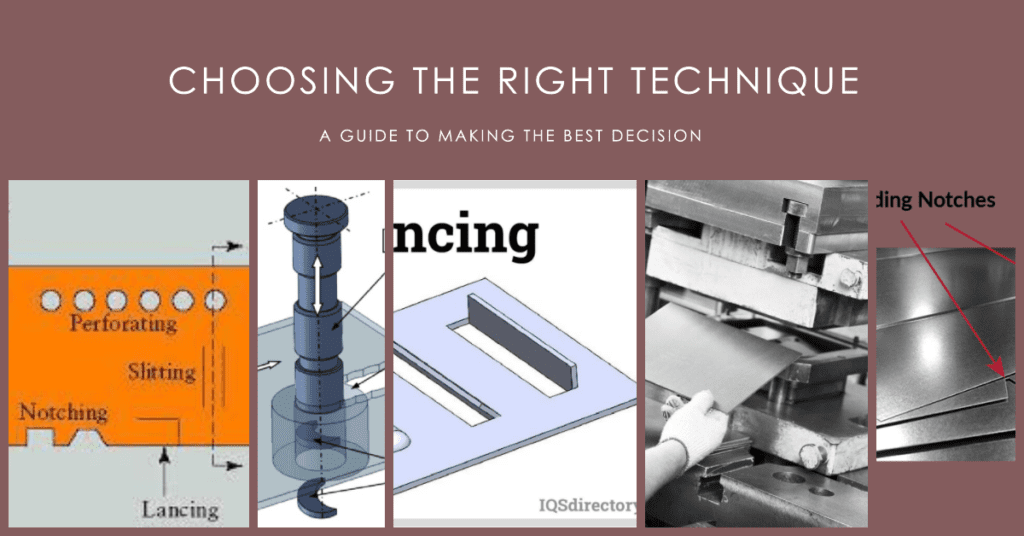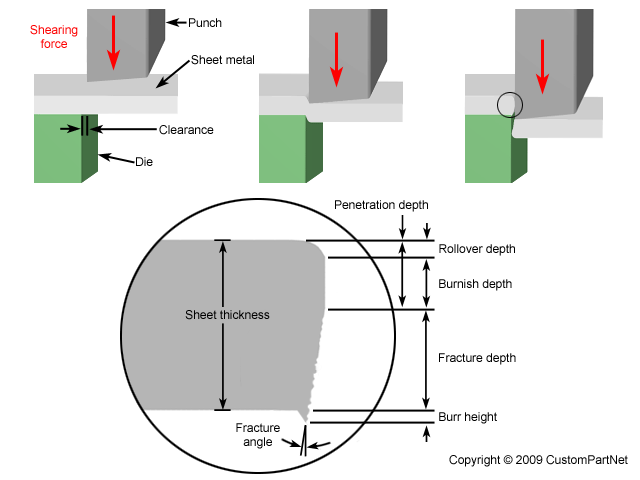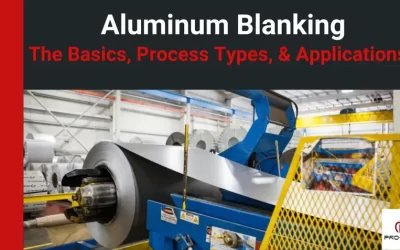
Sheet metal splitting is a key aspect of manufacturing, with techniques varying based on the complexity and precision required for each project. The appropriate method can make the difference between a high-quality finished product and one that falls short of the mark. With options like shearing, laser cutting, and plasma cutting available, the choice can often seem overwhelming.
This guide breaks down the selection process into six comprehensive steps, helping you select the most suitable splitting technique for your sheet metal project.
Step 1: Define Your Project Requirements
To make an informed decision about the right sheet metal splitting technique, you must first clearly define the requirements of your project. This involves considering several aspects.
What Are the Purposes of the Project? What is the end purpose of your project? What are the design complexities? The answers to these questions will guide your decision.
- A simple project: Projects requiring simple, straight-line cuts are well suited for shearing or stamping.
- Complex designs: For intricate designs with complex geometries, consider laser or waterjet cutting.
What About the Project Scale? The size of the project can influence the choice of splitting technique. For instance, if you require many components, laser cutting may be the best option due to its speed and efficiency. Conversely, for small-scale projects, techniques such as shearing or stamping may be more cost-effective.
Material Thickness The thickness of the sheet metal plays a vital role in the choice of splitting technique. Shearing or laser cutting are often suitable for thin sheet metal. On the other hand, thick and heavy materials may require more robust methods like plasma cutting.
Step 2: Understand Different Splitting Techniques

Before choosing a splitting technique, you should understand what each one involves and what its advantages are. The table below describes the various methods in detail.
| Method | Description | Speed | Precision | Suitable for |
|---|---|---|---|---|
| Shearing | Shearing involves a shear force applied to the metal, causing it to break along a straight line. | High | Low | Straight-line cuts, large quantities |
| Laser Cutting | Laser cutting employs a high-power laser beam to cut precise and complex patterns into sheet metal. | High | High | Complex geometries, fast and efficient |
| Plasma Cutting | Plasma cutting uses a jet of hot plasma to cut through metal. This method is typically used for heavy-duty cutting tasks. | Low | Medium | Thick and heavy materials, large-scale operations |
Step 3: Consider the Costs
Once you’ve understood your project requirements and the different splitting techniques, the next step is to consider the associated costs. Understanding both direct and indirect costs can provide a more comprehensive view of the project’s overall expense. The best choice will strike a balance between quality and cost-effectiveness.
- Direct Costs The direct costs of the project include the cost of the splitting technique, the materials, and the labor involved. For example, laser cutting can be more expensive than shearing due to the high cost of the equipment and energy consumption.
- Indirect Costs Indirect costs are those that aren’t directly associated with the production process but are still relevant to the project’s total cost. This includes costs related to maintenance, waste management, and energy consumption. For instance, while laser cutting may have higher direct costs, it might result in less waste and therefore lower indirect costs.
Step 4: Evaluate Material Compatibility
Not all sheet metal splitting techniques are suitable for all types of materials. It is crucial to evaluate the compatibility between your chosen material and the splitting technique.
- Material Characteristics
Different materials have unique properties that can influence how they react to different cutting techniques. These include:
- Hardness: Hard materials may be more challenging to cut but can provide higher resistance to wear and tear. Techniques like laser cutting can be more efficient for these materials.
- Thermal Conductivity: Some materials conduct heat better than others, which can impact the effectiveness of thermal cutting methods like laser and plasma cutting.
- Surface Quality: The surface quality of the material can affect the quality of the cut. A smoother surface can lead to cleaner cuts.
Materials and Techniques Compatibility Table
| Material | Shearing | Laser Cutting | Plasma Cutting |
|---|---|---|---|
| Mild Steel | Suitable | Suitable | Suitable |
| Stainless Steel | Suitable | Suitable | Less Suitable |
| Aluminum | Suitable | Suitable | Suitable |
| Copper | Less Suitable | Suitable | Less Suitable |
| Brass | Less Suitable | Suitable | Less Suitable |
Step 6: Seek Professional Advice
With so many factors to consider, seeking advice from a professional can be incredibly beneficial. Sheet metal fabrication experts can provide insight into the best techniques for your specific project. They can evaluate your project’s specifics and recommend the most efficient and cost-effective method.
Prolean’s Sheet Metal Manufacturing Services
Prolean is a leading provider of sheet metal manufacturing services, offering a full range of capabilities to meet all your project needs. Our services encompass everything from initial design consultation to the final delivery of high-quality sheet metal components. We offer several different splitting techniques, including shearing, laser cutting, and plasma cutting, allowing us to match the right process to your specific project requirements.
At Prolean, our team of experienced professionals is always on hand to provide expert advice and guidance. We understand that every project is unique, and we work closely with our clients to understand their specific requirements and objectives. This approach enables us to recommend the most suitable and cost-effective splitting techniques, ensuring the best possible outcome for each project.
Common Mistakes to Avoid When Choosing the Right Metal Splitting Techniques
Choosing the appropriate metal-splitting technique for your project is crucial, but there are common pitfalls that many fall into during this process. Here are some common mistakes to avoid:
1. Not Considering the Material Characteristics
Different materials respond differently to various splitting techniques. For instance, thicker materials might be better suited for plasma cutting, while thinner metals could be more efficiently handled with laser cutting. Not considering the specific characteristics of the material can lead to sub-optimal results or even damage the material.
2. Overlooking Project Requirements
Each project has unique requirements – from the precision needed in the cuts, to the volume of materials to be split. Failing to consider these aspects can lead to choosing a method that’s not the most efficient or cost-effective for your specific project.
3. Neglecting the Importance of Lead Time
Different splitting methods have varying processing times. Some methods might be faster but could compromise the quality of the cuts, while others might be slower but provide superior results. Ignoring the lead time in your project schedule can cause unnecessary delays or rushed work.
4. Underestimating Costs
While it’s important to stay within budget, choosing the cheapest option without considering the quality and efficiency of the method could lead to higher costs in the long run. Factors such as maintenance costs, power consumption, and tooling lifespan should also be considered in the overall cost.
Conclusion
Sheet metal splitting is a crucial aspect of manufacturing. Choosing the right technique for your project can make all the difference between an exceptional finished product and one that falls short of expectations. With several methods available, such as shearing, laser cutting, and plasma cutting, the choice can seem overwhelming. However, it is essential to select the most suitable method that aligns with your project goals, budget, and timeline.
To make an informed decision, you need to follow a six-step decision-making process. The first step is to define your project requirements by considering various aspects, such as the end purpose of the project, design complexities, project scale, and material thickness.
FAQs
What is the most precise sheet metal splitting method?
Laser cutting offers the highest precision, making it ideal for complex designs.
Which sheet metal splitting technique is the fastest?
Laser cutting is typically the fastest, though the exact speed can depend on the complexity and size of the project.
What is the difference between plasma cutting and laser cutting?
Laser cutting uses a high-power laser beam to cut precise and intricate patterns into sheet metal. Plasma cutting, on the other hand, uses a jet of hot plasma to cut through metal. Plasma cutting is typically used for heavy-duty cutting tasks, while laser cutting is better suited for complex geometries and faster and more efficient cutting.
What factors should I consider when choosing a sheet metal splitting technique?
When choosing a sheet metal splitting technique, several factors should be considered, including project requirements, material compatibility, costs, lead time, and precision. Each technique has its advantages and disadvantages, and the choice will ultimately depend on the specific needs of the project.




0 Comments